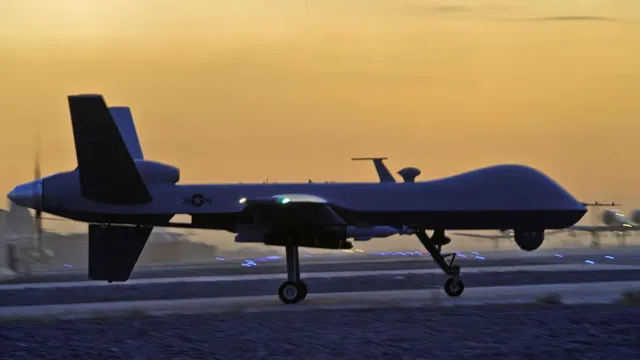- By Supratik Das
- Fri, 09 May 2025 08:09 AM (IST)
- Source:JND
In a large-scale escalation on the Line of Control (LoC) and International Borders (IB), the Indian Army successfully thwarted a massive swarm drone attack launched by Pakistan. More than 50 unmanned aerial vehicles (UAVs) were intercepted and neutralized during a large-scale counter-drone operation conducted by Indian Army Air Defence units in the areas of Udhampur, Samba, Jammu, Akhnoor, Nagrota, and Pathankot.
Indian Army Air Defence units employed L-70 anti-aircraft guns, Zu-23mm twin-barrel systems, Soviet-origin Schilka platforms, and other state-of-the-art drone neutralisation technologies. The operation, which stretched into several hours, showcased India's increasing competence in electronic warfare, real-time monitoring, and quick-response capabilities to combat aerial threats. The drone incursion marks a new phase of conflict between India and Pakistan, transitioning from conventional cross-border engagements to advanced drone warfare. While both sides have integrated UAVs into their military operations, critical differences remain in scale, technology, and strategic use of unmanned systems.
India’s Drone Tech Dominates: A Superior UAV Arsenal
While the airspaces of South Asia become an arena, both India and Pakistan are racing to expand their drone arsenals, but India holds a clear advantage in fleet strength, technological edge, and international alliance. India has a diverse fleet of close to 200 Medium Altitude Long Endurance (MALE) drones and more than 900 mini and micro UAVs for tactical and surveillance missions. Pakistan's drone fleet is relatively smaller, with about 60 MALE UAVs, 70 tactical UAVs under its air force, approximately 100 run by its army, and 60 drones under naval control. The procurement of these drones further highlights the strategic difference between the two countries. India has been depending significantly on Israel and United States advanced drone technology. Surveillance The Harpy is autonomous and meant to detect and destroy enemy radar installations, with a nine-hour loiter time and a range of 500 kilometres. The Harop provides a greater operational range of 1,000 kilometres and has improved jamming resistance and multi-angle attack profiles, allowing it to operate in contested airspace.
One other significant strength within India's drone inventory is the American MQ-9 Reaper, a battle-hardened UAV with a 1,700-kilogram payload capacity, 27-hour operating time, and 1,850-kilometre reach. India has procured its variants like MQ-9B SeaGuardian and SkyGuardian, which are equipped with advanced surveillance sensors and precision-strike ability. India’s homegrown Rustom-II, developed by DRDO, represents its push towards indigenous drone technology. The UAV is currently undergoing operational testing and is expected to support intelligence, surveillance, and future strike missions. With a 12-hour endurance and 350-kilogram payload, Rustom-II is expected to play a key role in India’s long-term drone strategy.
Pakistan’s Imported Power: Chinese and Turkish UAVs Lead the Charge
Conversely, Pakistan has relied heavily on Turkish and Chinese-sourced drones. The Bayraktar Akıncı, a high-altitude long-endurance UAV from Turkey, is one of Pakistan’s most advanced platforms. It can fly at 40,000 feet, has a payload capacity of 1,500 kilograms, and is capable of both air-to-air and air-to-ground missions. The Bayraktar TB2, which is also Turkish, has been widely employed in wars like Libya and the Nagorno-Karabakh conflict. With a 27-hour flight time and ability to carry smart micro munitions such as MAM-L and MAM-C, it is an integral component of Pakistan's ISTAR (Intelligence, Surveillance, Target Acquisition, and Reconnaissance) operations. China's CH-4, a combat UAV also operated by Pakistan, provides 14-hour endurance and up to 5,000 kilometres range in some models. It has guided bombs and anti-armor missiles, extending the strike depth of Pakistan. Pakistan has also enhanced its domestically produced Shahpar series of drones, now entering their third generation, with advanced ISR and constrained strike capabilities. The new Shahpar-III, revealed in 2024, enables multi-role operations and signifies an increase in domestic capacity.
While Pakistan's drones have proved effective in asymmetric warfare situations, India's drone fleet provides greater endurance, battlefield survivability, and connectivity with global military networks. As both countries upgrade their UAV arsenals, the region is now experiencing a high-tech silent war over domination of the South Asian skies.

